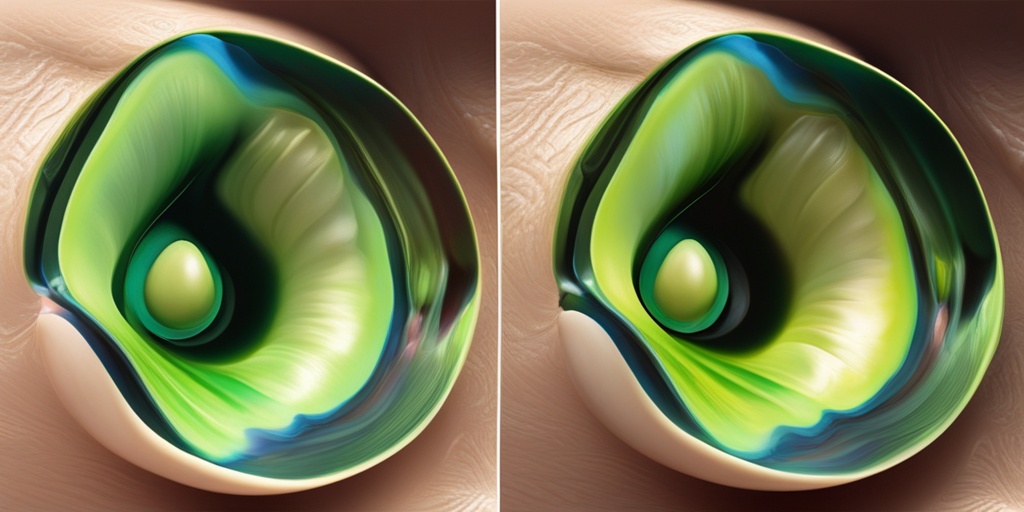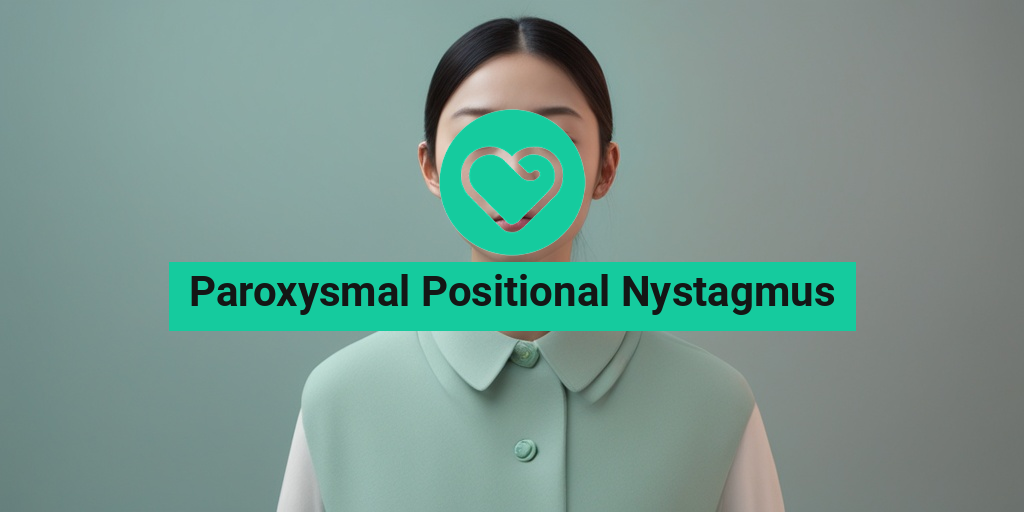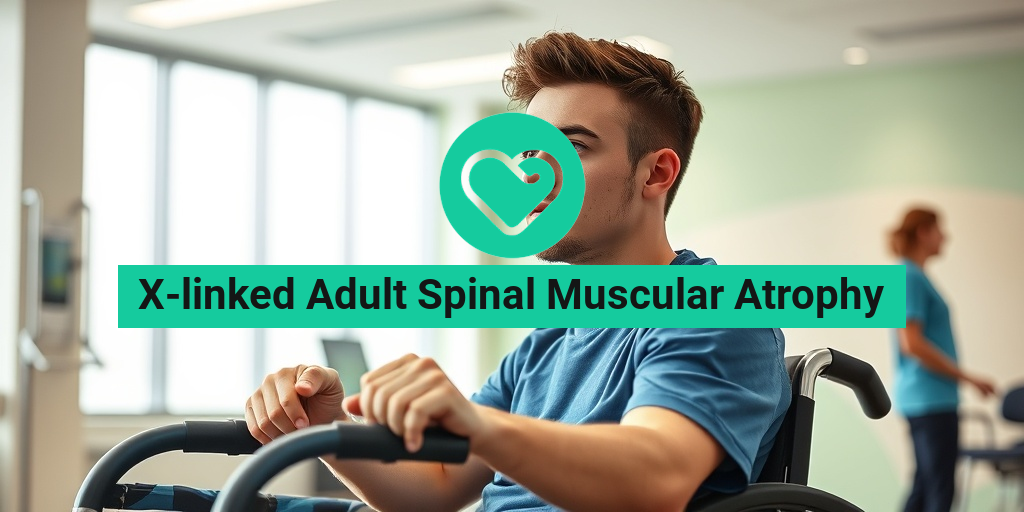What Is Paroxysmal Positional Nystagmus?
Have you ever experienced a sudden, intense feeling of spinning or dizziness when you change positions, like getting out of bed or standing up from a seated position? If so, you might be experiencing paroxysmal positional nystagmus (PPN). But what exactly is PPN, and how does it differ from other types of vertigo?
Defining Paroxysmal Positional Nystagmus
Paroxysmal positional nystagmus is a type of vertigo that occurs when there is a sudden, brief episode of nystagmus (abnormal eye movements) triggered by a change in head position. This can happen when you move your head in a specific way, such as tilting it to one side or looking up or down.
The symptoms of PPN can be quite unsettling, including:
- Dizziness or spinning sensation
- Nausea and vomiting
- Loss of balance or unsteadiness
- Abnormal eye movements (nystagmus)
These symptoms usually last for a short period, typically seconds to minutes, and can resolve on their own once the triggering position is changed.
Causes of Paroxysmal Positional Nystagmus
The exact cause of PPN is not always clear, but it’s often associated with benign paroxysmal positional vertigo (BPPV), a common inner ear disorder. BPPV occurs when tiny calcium particles in the inner ear become dislodged and move into the canals of the inner ear, causing vertigo and nystagmus.
Other possible causes of PPN include:
- Head trauma or injury
- Infections, such as labyrinthitis or vestibular neuritis
- Inner ear disorders, like Meniere’s disease
- Certain medications
Understanding Benign Paroxysmal Positional Vertigo
As mentioned earlier, benign paroxysmal positional vertigo (BPPV) is a common inner ear disorder that can cause paroxysmal positional nystagmus. But what exactly is BPPV, and how does it affect people?
What Is Benign Paroxysmal Positional Vertigo?
Benign paroxysmal positional vertigo is a condition in which the inner ear sends false signals to the brain, causing brief, intense episodes of vertigo and nystagmus. These episodes are usually triggered by specific head movements, such as:
- Rolling over in bed
- Getting out of bed
- Looking up or down
- Bending or straightening
BPPV is considered “benign” because it’s not a sign of a serious underlying condition, and it’s not typically associated with hearing loss or other symptoms.
Symptoms of Benign Paroxysmal Positional Vertigo
The symptoms of BPPV can be quite distressing, including:
- Vertigo or spinning sensation
- Nausea and vomiting
- Loss of balance or unsteadiness
- Abnormal eye movements (nystagmus)
- Headaches
- Fatigue
If you’re experiencing any of these symptoms, it’s essential to consult with a healthcare professional for an accurate diagnosis and treatment plan.
For more information on paroxysmal positional nystagmus and benign paroxysmal positional vertigo, consider consulting with a healthcare professional or visiting a trusted online resource like Yesil Health AI, which provides evidence-based health answers and personalized guidance.
Remember, if you’re experiencing persistent or severe vertigo symptoms, don’t hesitate to seek medical attention. With the right diagnosis and treatment, you can find relief from the discomfort and distress of paroxysmal positional nystagmus and BPPV. 🏥

Paroxysmal Positional Nystagmus Symptoms
Are you experiencing sudden, brief episodes of vertigo, dizziness, or nausea when changing positions? You might be wondering what’s going on with your body. If you’re experiencing these symptoms, you might be dealing with Paroxysmal Positional Nystagmus (PPN). In this section, we’ll dive into the common symptoms of PPN and what you can expect.
What are the Common Symptoms of Paroxysmal Positional Nystagmus?
People with PPN often experience a range of symptoms, including:
- Vertigo or dizziness: A sudden feeling of spinning or swaying when changing positions, such as standing up, lying down, or rolling over in bed.
- Nystagmus: Abnormal eye movements, which can be horizontal, vertical, or rotary. This can be accompanied by blurred vision or difficulty focusing.
- Nausea and vomiting: Feeling queasy or lightheaded, which can lead to vomiting in severe cases.
- Loss of balance or unsteadiness: Difficulty walking or maintaining balance, especially when changing positions.
- Hearing symptoms: Some people may experience tinnitus (ringing in the ears), ear fullness, or hearing loss.
These symptoms can be triggered by specific movements, such as:
- Rolling over in bed
- Getting out of bed
- Standing up or sitting down
- Bending down or looking up
It’s essential to note that PPN symptoms can vary in severity and frequency. Some people may experience mild symptoms, while others may have more severe and frequent episodes.
Causes of Paroxysmal Positional Nystagmus
So, what causes Paroxysmal Positional Nystagmus? Let’s explore the possible underlying factors that can trigger this condition.
Benign Paroxysmal Positional Vertigo (BPPV)
BPPV is the most common cause of PPN. BPPV occurs when tiny calcium particles in the inner ear become dislodged and move into the canals of the inner ear. This can cause the symptoms mentioned earlier. BPPV is often triggered by head injuries, ear infections, or age-related wear and tear.
Other Possible Causes of Paroxysmal Positional Nystagmus
In some cases, PPN can be caused by other factors, including:
- Inner ear problems: Infections, inflammation, or tumors in the inner ear can cause PPN.
- Head trauma: A head injury can cause PPN by dislodging the calcium particles in the inner ear.
- Vestibular migraine: A type of migraine that affects the inner ear and can cause PPN symptoms.
- Central positional nystagmus: A rare condition caused by a problem in the brainstem or cerebellum.
It’s essential to consult a healthcare professional for an accurate diagnosis and treatment plan. They will perform a series of tests, including a physical examination, medical history, and possibly imaging tests, to determine the underlying cause of your PPN symptoms.

Diagnosing Paroxysmal Positional Nystagmus
Diagnosing Paroxysmal Positional Nystagmus (PPN) can be a challenging task, as its symptoms can be similar to those of other vestibular disorders. However, a thorough medical history, physical examination, and diagnostic tests can help healthcare professionals accurately diagnose PPN.
Medical History
A detailed medical history is essential in diagnosing PPN. Your healthcare provider will ask you questions about your symptoms, such as:
- When did your symptoms start?
- How long do your symptoms last?
- What triggers your symptoms?
- Do you experience any other symptoms, such as vertigo, dizziness, or nausea?
This information will help your healthcare provider understand the pattern of your symptoms and rule out other possible causes.
Physical Examination
A physical examination is crucial in diagnosing PPN. Your healthcare provider will perform a series of tests to assess your vestibular function, including:
- Dix-Hallpike maneuver: This test involves rapidly changing your head position to trigger nystagmus.
- Roll test: This test involves rotating your head from side to side to assess your vestibular function.
- Vestibular-ocular reflex (VOR) testing: This test evaluates your ability to maintain gaze stability during head movements.
These tests can help your healthcare provider identify the presence of nystagmus and assess its characteristics, such as its direction, amplitude, and latency.
Diagnostic Tests
In some cases, additional diagnostic tests may be necessary to confirm the diagnosis of PPN. These tests may include:
- Electronystagmography (ENG): This test records the electrical activity of your eye muscles to assess your vestibular function.
- Videonystagmography (VNG): This test uses video cameras to record your eye movements during vestibular testing.
- Imaging tests: Such as CT or MRI scans to rule out other underlying conditions that may be causing your symptoms.
These tests can help your healthcare provider identify any abnormalities in your vestibular system and confirm the diagnosis of PPN.
Treatment for Paroxysmal Positional Nystagmus
Treatment for Paroxysmal Positional Nystagmus (PPN) typically focuses on relieving symptoms and improving vestibular function. The goal of treatment is to reduce the frequency and severity of nystagmus episodes and improve your overall quality of life.
Canalith Repositioning Procedures
Canalith repositioning procedures, such as the Epley maneuver, are commonly used to treat PPN. These procedures involve a series of specific head movements that help to move the calcium particles in your inner ear back into their proper position.
These procedures are usually performed by a healthcare provider, such as an audiologist or an ear, nose, and throat (ENT) specialist, and may need to be repeated several times to achieve optimal results.
Vestibular Rehabilitation Therapy (VRT)
Vestibular Rehabilitation Therapy (VRT) is a type of physical therapy that focuses on improving your vestibular function and reducing your symptoms. VRT may include:
- Exercises to improve your balance and coordination
- Techniques to reduce your symptoms, such as gaze stabilization exercises
- Education on how to manage your symptoms and prevent future episodes
VRT can be an effective treatment for PPN, especially when combined with canalith repositioning procedures.
Medications
In some cases, medications may be prescribed to help relieve symptoms, such as:
- Vestibular suppressants, such as antihistamines or benzodiazepines, to reduce the severity of nystagmus
- Anti-nausea medications to reduce nausea and vomiting
However, medications should only be used under the guidance of a healthcare provider and may have potential side effects.
By working with a healthcare provider to develop a personalized treatment plan, you can effectively manage your PPN symptoms and improve your overall quality of life. 🏥

Exercises for Paroxysmal Positional Nystagmus
Are you tired of feeling like the room is spinning whenever you move your head or change positions? If you’re living with Paroxysmal Positional Nystagmus (PPN), you know how debilitating it can be. The good news is that there are exercises that can help alleviate the symptoms of PPN and improve your overall quality of life.
The Epley Maneuver
The Epley Maneuver is a series of exercises that can help treat Benign Paroxysmal Positional Vertigo (BPPV), a common cause of PPN. The maneuver involves a series of head movements that help to move the calcium particles in your inner ear back into place, reducing the symptoms of vertigo and nystagmus.
To perform the Epley Maneuver, follow these steps:
- Sit on a bed or a firm surface with your legs extended in front of you.
- Turn your head 45 degrees to the right, keeping your body straight.
- Lie down on your back, keeping your head turned to the right.
- Stay in this position for 30 seconds to allow the calcium particles to settle.
- Sit up and turn your head to the left, keeping your body straight.
- Lie down on your back, keeping your head turned to the left.
- Stay in this position for 30 seconds to allow the calcium particles to settle.
Repeat the Epley Maneuver three to five times a day, as needed, until your symptoms improve.
Brandt-Daroff Exercises
The Brandt-Daroff exercises are another series of movements that can help to alleviate the symptoms of PPN. These exercises involve a combination of head movements and positional changes to help your inner ear adjust to the movements.
To perform the Brandt-Daroff exercises, follow these steps:
- Sit on a bed or a firm surface with your legs extended in front of you.
- Move your head to the right, keeping your body straight, and hold for 30 seconds.
- Move your head to the left, keeping your body straight, and hold for 30 seconds.
- Lie down on your back, keeping your head straight, and hold for 30 seconds.
- Sit up and move your head to the right, keeping your body straight, and hold for 30 seconds.
- Repeat the sequence five times, three times a day.
Remember to start slowly and gradually increase the frequency and duration of the exercises as your symptoms improve.
Living with Paroxysmal Positional Nystagmus
Living with Paroxysmal Positional Nystagmus can be challenging, but there are ways to manage your symptoms and improve your quality of life.
Lifestyle Changes
Making some simple lifestyle changes can help to reduce the frequency and severity of PPN symptoms. Here are a few tips:
- Avoid triggers: Identify the activities or movements that trigger your PPN symptoms and try to avoid them as much as possible.
- Get enough sleep: Fatigue can exacerbate PPN symptoms, so make sure to get plenty of rest and practice good sleep hygiene.
- Stay hydrated: Dehydration can worsen PPN symptoms, so drink plenty of water throughout the day.
- Exercise regularly: Regular exercise can help to improve your overall health and reduce the frequency of PPN symptoms.
Remember, living with PPN requires patience, persistence, and a willingness to make lifestyle changes. By incorporating exercises and lifestyle changes into your daily routine, you can reduce the frequency and severity of your symptoms and improve your overall quality of life.
💪 Remember, you’re not alone in this journey! There are many resources available to help you manage your PPN symptoms and improve your quality of life. Don’t hesitate to reach out to a healthcare professional for guidance and support. 🤝

Frequently Asked Questions about Paroxysmal Positional Nystagmus
What is Paroxysmal Positional Nystagmus?
Paroxysmal positional nystagmus is a type of vertigo that occurs when there is a sudden change in the position of the head. It is characterized by a sudden onset of vertigo, nausea, and vomiting, accompanied by abnormal eye movements (nystagmus).
What causes Paroxysmal Positional Nystagmus?
The exact cause of paroxysmal positional nystagmus is not fully understood, but it is believed to be related to the movement of tiny crystals in the inner ear, which can become dislodged and cause vertigo.
What are the symptoms of Paroxysmal Positional Nystagmus?
The symptoms of paroxysmal positional nystagmus include:
- Vertigo or dizziness
- Nausea and vomiting
- Abnormal eye movements (nystagmus)
- Loss of balance or unsteadiness
- Hearing loss or tinnitus
How is Paroxysmal Positional Nystagmus diagnosed?
Diagnosis of paroxysmal positional nystagmus typically involves a physical examination, including a Dix-Hallpike maneuver, which involves moving the patient’s head into different positions to trigger the symptoms.
How is Paroxysmal Positional Nystagmus treated?
Treatment for paroxysmal positional nystagmus typically involves a series of exercises and maneuvers, such as the Epley maneuver, which can help to move the crystals back into their normal position in the inner ear.
Can Paroxysmal Positional Nystagmus be prevented?
While there is no sure way to prevent paroxysmal positional nystagmus, taking steps to reduce the risk of inner ear damage, such as wearing a helmet during high-impact activities, can help to reduce the risk of developing the condition.
What is the difference between Paroxysmal Positional Nystagmus and Benign Paroxysmal Positional Vertigo (BPPV)?
Paroxysmal positional nystagmus and BPPV are related conditions, but they are not the same thing. BPPV is a type of vertigo that is caused by the movement of crystals in the inner ear, while paroxysmal positional nystagmus is a type of nystagmus that occurs in response to changes in head position.
Can Paroxysmal Positional Nystagmus cause other health problems?
Yes, paroxysmal positional nystagmus can cause other health problems, such as anxiety, depression, and sleep disturbances, due to the impact of the condition on daily life.
Is Paroxysmal Positional Nystagmus a lifelong condition?
In some cases, paroxysmal positional nystagmus can be a lifelong condition, but with proper treatment and management, it is possible to reduce the frequency and severity of symptoms.
Can I drive or operate heavy machinery with Paroxysmal Positional Nystagmus?
It is not recommended to drive or operate heavy machinery if you have paroxysmal positional nystagmus, as the condition can cause sudden episodes of vertigo and loss of balance, which can increase the risk of accidents.
Can I fly with Paroxysmal Positional Nystagmus?
It is generally safe to fly with paroxysmal positional nystagmus, but it is recommended to take precautions, such as sitting in a seat over the wing and avoiding heavy meals before flying, to reduce the risk of symptoms during the flight.
Can I exercise with Paroxysmal Positional Nystagmus?
Yes, it is possible to exercise with paroxysmal positional nystagmus, but it is recommended to start slowly and gradually increase the intensity and duration of exercise to avoid triggering symptoms.
Can I get disability benefits for Paroxysmal Positional Nystagmus?
It may be possible to get disability benefits for paroxysmal positional nystagmus, depending on the severity of the condition and its impact on daily life. It is recommended to consult with a healthcare professional and a disability attorney to determine eligibility.
Can I get a second opinion for Paroxysmal Positional Nystagmus?
Yes, it is always a good idea to get a second opinion for paroxysmal positional nystagmus, especially if you are not satisfied with the diagnosis or treatment plan. A second opinion can provide additional insight and peace of mind.
What is the prognosis for Paroxysmal Positional Nystagmus?
The prognosis for paroxysmal positional nystagmus is generally good, with most people experiencing a significant reduction in symptoms with proper treatment and management.
Can Paroxysmal Positional Nystagmus be cured?
While there is no cure for paroxysmal positional nystagmus, it is possible to manage the condition and reduce the frequency and severity of symptoms with proper treatment and lifestyle changes.
What is the latest research on Paroxysmal Positional Nystagmus?
Researchers are continuing to study the causes and mechanisms of paroxysmal positional nystagmus, as well as new treatments and therapies for the condition. Stay tuned for updates on the latest research! 🔬




